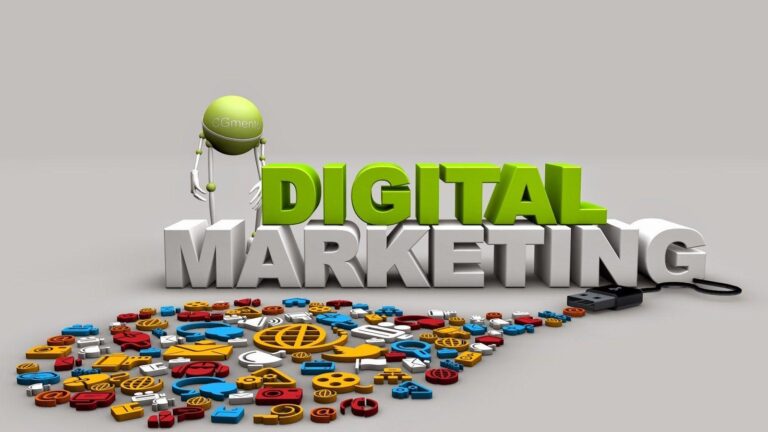Mastering Translation for Four Critical Life Science Documents.
Precision is mandatory. Learn the unique requirements for every document from protocol to diary.
Your life science translation services must guarantee regulatory compliant translation for global submissions and accurate patient data capture.
Clinical study report translation services must ensure every statistical table and data point is perfectly localized. Errors compromise data integrity in translation and regulatory approval.
SmPC translation is a legal mandate in the EU. We specialize in strict adherence to the QRD template SmPC and evolving EMA translation requirements to prevent submission delays.
Patient diary translation demands patient-centric language (PCL) translation). We utilize cultural adaptation and readability standards to ensure all trial participants understand the questions.
Beyond Terminology: Expert Translation for Your Most Critical Life Science Documents.
Abstract
In the highly regulated world of pharmaceuticals and clinical trials, every document is a legal, scientific, and patient safety record. This comprehensive life science translation services masterclass breaks down the essential requirements for translating four cornerstone clinical documents: Clinical Study Protocols, Clinical Study Reports (CSRs), Summaries of Product Characteristics (SmPCs), and Patient Diaries. We detail the specialized approaches—from adhering to ICH guideline translation for protocols to using patient-centric language (PCL) translation for diaries—that ensure regulatory compliant translation and uphold the highest standards of data integrity in translation. This level of specialized service defines what is required from top-tier professional translation services in the clinical field.
Introduction: The Language of Life Sciences Demands Professional Translation Services.
In life sciences, every document has a precise purpose and a distinct audience—from a regulatory body scrutinizing a Clinical Study Protocol to a patient recording symptoms in a Patient Diary. The inherent risk and the mandatory compliance requirements mean that the translation approach for each must be as specialized as the documents themselves. Using a generalist or relying on inadequate machine translation for these records is a direct pathway to regulatory rejection, data invalidation, or patient risk.
This masterclass serves as an ultimate guide, designed for clinical research organizations (CROs) and pharmaceutical companies seeking expert life science translation services. We break down the essential considerations for accurately translating four cornerstone documents that define the success and safety of a clinical trial: Clinical Study Protocols, Clinical Study Reports (CSRs), Summaries of Product Characteristics (SmPCs), and Patient Diaries. We will demonstrate that achieving regulatory compliant translation requires a partner who understands the deep technical and regulatory nuances of each specific document type. This specialized expertise is the hallmark of true professional translation services in the clinical space.
H2: At a Glance: Key Considerations for Life Science Translation Services
The complexity of clinical documentation lies in the varied audiences and compliance standards. The table below provides a quick, shareable overview of the specialized approach required for each document, immediately highlighting why a one-size-fits-all translation solution is insufficient.
| Document Type | Primary Audience | Key Challenge | Our Specialized Approach |
| Clinical Study Protocol | Regulatory Bodies, Ethics Committees | Precision of Methodology, ICH Terminology | Translator Clinicians, Strict ICH guideline translation |
| Clinical Study Report (CSR) | Regulatory Submissions (FDA, EMA) | Data Consistency, Volume Management | Large-Volume Expertise, Cross-Reference Checks |
| SmPC | Healthcare Professionals | QRD Template SmPC Adherence, Mandated Phrasing | QRD Specialists, In-Country MD Review |
| Patient Diary | Trial Participants, Site Staff | Clarity, Cultural Adaptation, Low Health Literacy | Patient-Centric Language (PCL) translation, Cultural Testing |
Pillar 1: Clinical Study Protocol Translation – Blueprinting for Global Trials.
The Clinical Study Protocol is the foundational document of any trial. It is the rulebook, outlining the trial’s objectives, design, methodology, inclusion/exclusion criteria, and statistical considerations. Therefore, the clinical study protocol translation must be flawless, as any ambiguity can compromise the trial’s integrity, patient safety, and regulatory acceptance.
Audience, Purpose, and Regulatory Scrutiny.
The primary audience for the translated protocol includes local Ethics Committees, Institutional Review Boards (IRBs), and national regulatory bodies (like the FDA or EMA).
- Purpose: To gain approval to conduct the trial in a specific region and ensure all local investigators follow the exact same methodology.
- Regulatory Imperative: A mistranslated inclusion or exclusion criterion, a dosing schedule error, or a procedural misunderstanding in the informed consent process can invalidate trial data and lead to a regulatory hold. The integrity of the entire study hinges on the precision of the clinical study protocol translation.
H3: The Biggest Challenge: Absolute Methodological Precision
Translating the complex methodology and eligibility criteria demands absolute scientific precision. This goes beyond simple linguistic accuracy.
- Terminology Consistency: Clinical trials rely heavily on standardized terminology for adverse events, medical conditions, and therapeutic areas (e.g., using MedDRA and WHODrug dictionaries). The translation must strictly adhere to these standards, a core element of ICH guideline translation.
- Translating «What-Ifs»: Protocols often contain conditional logic (e.g., «If condition A, then procedure B, unless criterion C is met»). Translating this precise, often dense, legal and scientific language into the target language without creating ambiguity is the ultimate test of certified clinical translation.
Your Expert Process for Clinical Study Protocol Translation.
Our approach to clinical study protocol translation is built on specialized expertise and methodological rigor to ensure regulatory compliant translation.
- Translator Clinicians: We utilize translator teams with direct backgrounds in clinical research (e.g., former research coordinators, nurses, or physicians). These Subject Matter Experts (SMEs) ensure the terminology is scientifically accurate and appropriate for local clinical practice.
- ICH Guideline Translation Focus: Our processes are designed around the International Conference on Harmonisation (ICH) guidelines (particularly E6 for Good Clinical Practice). This means our terminology management and QA checks are specifically focused on procedural clarity and regulatory adherence. For more information on how we integrate these standards across all our projects, visit our dedicated life science translation services page.
- Procedural Clarity QC: Our Quality Control (QC) checks specifically audit the translated procedural steps to ensure they are clear, unambiguous, and cannot be misinterpreted by site staff, directly addressing the challenge of ensuring data integrity in translation.
Mastering EMA translation requirements and the complex, mandatory QRD template SmPC.

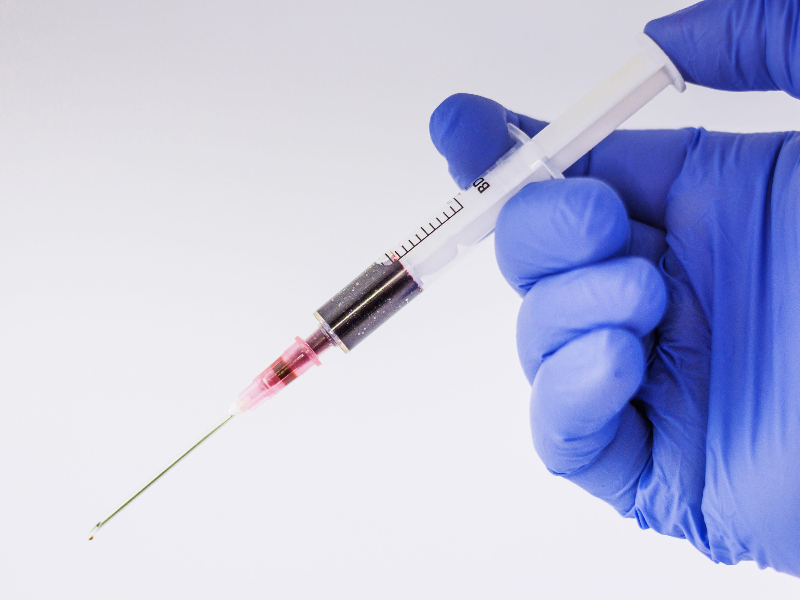
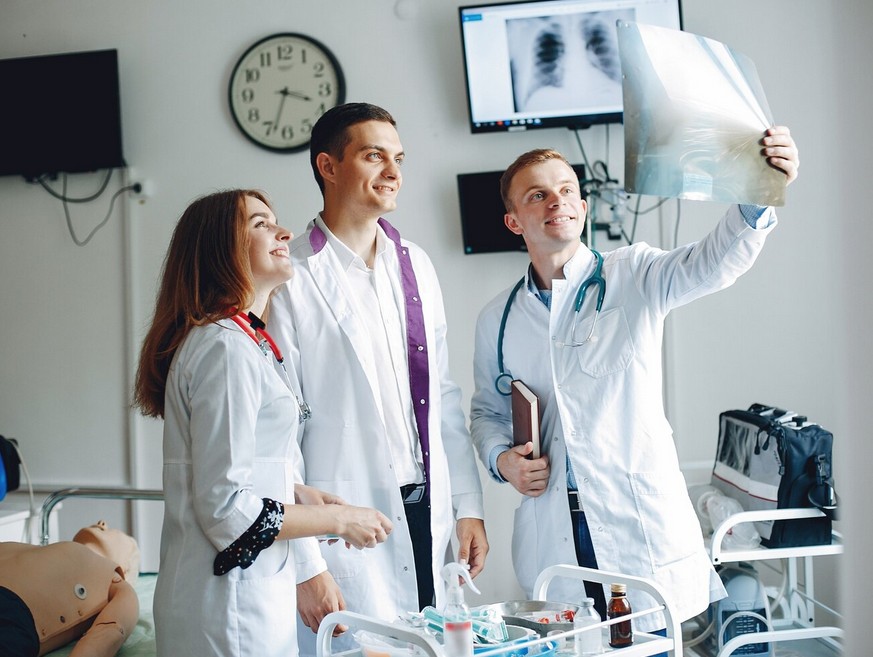
EU centralized procedures demand simultaneous, unified translations. Our process handles this complexity by integrating the QRD template into the workflow, avoiding the common formatting and phrasing issues that plague submissions.

Pillar 2: Clinical Study Report (CSR) Translation Services – The Definitive Record.
The Clinical Study Report (CSR) is the massive, definitive document summarizing the trial’s results, safety data, and statistical analysis. It is a critical component of the final regulatory submission, making clinical study report translation services a high-stakes undertaking.
Audience, Purpose, and Regulatory Weight.
The translated CSR is the core evidence presented to global regulatory agencies (such as the FDA, EMA, or national bodies in Asia) for marketing approval.
- Purpose: To convince regulators that the drug or device is safe and effective based on the trial data.
- The Culmination: This report is the culmination of years of work and millions of dollars. Any inconsistency between the translated CSR and the original protocol (or the original source data) is a significant regulatory risk.
The Biggest Challenge: Data Consistency and Sheer Volume.
CSRs are voluminous, highly structured documents that mix complex prose with thousands of data points, tables, and statistical summaries.
- Consistency with Protocol: A major challenge is maintaining absolute consistency with the clinical study protocol translation already approved for the trial. Terminology and procedural descriptions must match exactly.
- Handling Data Integrity: Tables containing adverse events, patient demographics, and statistical results must be localized without introducing even minute errors. This requires specialized tools and dedicated data QC checks to prevent errors that jeopardize ensuring data integrity in translation.
- Cross-Referencing: CSRs rely heavily on internal and external cross-references. The translation process must ensure all these links remain functional and point to the correct localized document or section, a key feature of high-quality clinical translation services.
Your Expert Process for Clinical Study Report Translation Services.
The process for clinical study report translation services must be designed for large-scale projects and absolute regulatory precision.
- Large-Volume Expertise: We specialize in leveraging technology (Translation Memory and terminology management) to handle massive projects efficiently while enforcing consistency. This systematic approach differentiates us as a reliable medical translation company.
- Cross-Reference Checks: Our QA process includes specific technical steps to audit all cross-references within the translated document, ensuring the structural integrity of the report is maintained—a necessary component of regulatory document translation.
- Security and Confidentiality: Given the highly sensitive and proprietary nature of the data, our processes include secure handling and data protection protocols that meet the stringent requirements for certified clinical translation. For details on our security framework, please visit our professional translation services pillar page.
Pillar 3: SmPC Translation – The Physician’s Essential Guide.
The Summary of Product Characteristics (SmPC) is a foundational document in the European Union (EU) and other regions, acting as the legally binding source of information for healthcare professionals regarding a medicinal product. Due to its legal status and the requirement for unified content across the EU, SmPC translation is an extremely specialized service requiring intimate knowledge of regulatory templates.
Audience, Purpose, and Legal Mandate.
The SmPC is specifically targeted at healthcare professionals (HCPs)—physicians, pharmacists, and regulatory reviewers.
- Purpose: To inform HCPs about the safe and effective use of the product, covering everything from indications and contraindications to dosage and adverse effects.
- Regulatory Imperative: The SmPC is the basis for all patient information leaflets and labeling. It is legally mandated to conform to a specific structure and often contains specific, standardized phrasing required by the European Medicines Agency (EMA translation requirements). Errors here can lead to immediate regulatory rejection or, worse, patient harm if dosing instructions are incorrect.
The Biggest Challenge: Adherence to the QRD Template SmPC.
The core challenge of SmPC translation is not just accuracy, but strict adherence to the QRD template SmPC (Quality Review of Documents template), which is maintained by the EMA.
- Template Rigidity: The QRD template dictates the exact structure, format, and even the language style and specific mandatory phrases that must be used. Translators must be fluent not only in the target language but also in the current QRD guidelines and their periodic updates.
- Mandated Phrasing: Deviating from mandated regulatory phrasing, even slightly, can be flagged during the agency’s review, proving insufficient mastery of EMA translation requirements. This contrasts sharply with general life science translation services.
- Unified Review: Because the SmPC is centrally reviewed for multiple markets, any linguistic ambiguity that is acceptable in one EU language but problematic in another can delay the entire pan-European approval process.
Your Expert Process for SmPC Translation.
Our process for SmPC translation is managed by specialists who live and breathe EU regulatory documents, ensuring regulatory compliant translation is achieved on the first pass.
- QRD Specialists: We utilize dedicated translation teams specializing in the QRD process. These linguists are trained specifically on the latest QRD template versions and continuously update their knowledge on EMA translation requirements.
- In-Country MD Review: The translated SmPC is subject to review by an in-country physician (MD or specialized HCP) to verify that the medical instructions and terminology are appropriate for local clinical practice and the local standard of care. This step elevates the certified clinical translation process to meet high regulatory expectations. For further detail on our specialized processes, we invite you to view our dedicated life science translation services page.
- Systemic Consistency: We use sophisticated terminology management tools to ensure consistency not only with the translated Patient Information Leaflet (PIL) but also across the broader regulatory document translation suite.
Pillar 4: Patient Diary and ePRO Translation – Capturing the Patient Voice.
The Patient Diary (or electronic Patient Reported Outcomes – ePRO translation) is the direct link to the patient experience. While highly technical documents like Protocols and SmPCs are crucial for regulators, the Patient Diary is crucial for gathering accurate, reliable data directly from trial participants.
Audience, Purpose, and Usability.
The audience for the Patient Diary is the trial participant, often a non-technical person with varying levels of health and general literacy.
- Purpose: To enable the participant to accurately record their symptoms, quality of life changes, and compliance with the treatment protocol.
- Usability Imperative: The translated diary must be simple, clear, and unambiguous. If a question is misunderstood, the data is corrupted, directly threatening ensuring data integrity in translation. This requires a shift from technical accuracy to communicative clarity, a cornerstone of patient-centric language (PCL) translation.
The Biggest Challenge: Clarity and Cultural Adaptation.
The challenge of patient diary translation is achieving simplicity without compromising scientific accuracy.
- Health Literacy: The language must be appropriate for a broad public audience, often requiring simplification of scientific terms into plain language, a difficult skill often lacking in general medical translation company teams.
- Cultural Adaptation for Patient Diaries: Symptom descriptions or emotional states must resonate locally. For instance, translating an expression like «a pain like a burning ember» must be carefully adapted to ensure the cultural meaning is transferred correctly, confirming that cultural adaptation for patient diaries is successful.
- Platform Integration: For ePRO translation, the final text must fit within the technical constraints (character limits, display size) of the electronic platform, adding a layer of technical complexity to the linguistic task.
Your Expert Process for Patient Diary Translation.
Our approach ensures the translated diary is linguistically clear, culturally sensitive, and technically compliant for ePRO translation platforms.
- Patient-Centric Language (PCL) translation: Our dedicated team uses established readability guidelines (such as the Flesch-Kincaid scale) to ensure the language is accessible. We prioritize simple sentence structures and common vocabulary.
- Cultural Adaptation Testing: We conduct rigorous review specifically focused on cultural adaptation for patient diaries, validating that the tone, imagery, and examples are locally appropriate and will not cause confusion or offense.
- Iterative Review: The ePRO translation process often involves iterative review cycles with site staff or patient groups to ensure maximum usability before final deployment. This is a critical quality standard for clinical translation services.
Conclusion: The Common Thread—Precision, Compliance, and Data Integrity.
The four cornerstone documents—Protocols, CSRs, SmPCs, and Patient Diaries—serve vastly different purposes and are aimed at distinct audiences. Yet, they share a critical common requirement: translation precision that upholds the highest standards of regulatory compliance, patient safety, and ensuring data integrity in translation.
From the stringent adherence to ICH guideline translation required for a protocol to the compassionate, clear tone demanded for patient-centric language (PCL) translation in a diary, the complexity confirms that only specialized expertise is adequate.
Eliminate Submission Risk.

Certified clinical translation for the highest level of regulatory document translation compliance.
The primary risk a specialist mitigates is regulatory rejection or RFI delays caused by inconsistent or non-compliant terminology in the protocol or CSR.
Our T-E-P process is layered with two independent SMEs, rigorously enforcing ICH guideline translation to guarantee ensuring data integrity in translation.
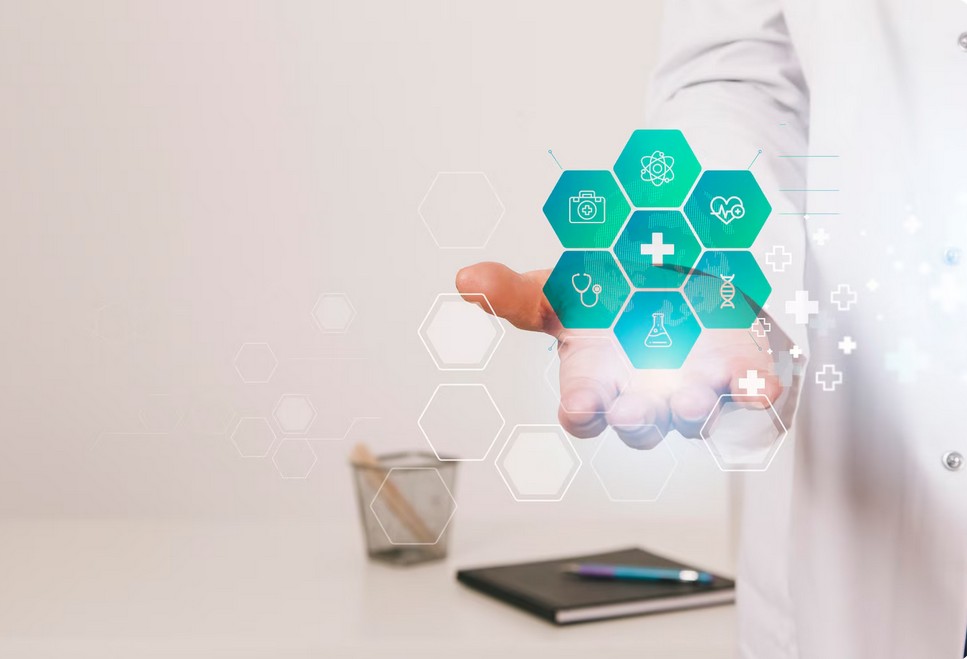

Trust Only Professional Translation Services That Provide an Auditable Compliance Trail.
Our system tracks every single edit, term change, and in-country review decision, providing the full audit trail required by global health authorities.
Behind the Scenes: The Tools and Standards of Specialized Life Science Translation Services.
This level of quality is not accidental; it is built on a foundation of technology and certification. Our life science translation services are powered by:
- ISO Certification: We operate within processes aligned with ISO 17100 and ISO 13485 (Medical Devices Quality Management) to ensure auditable, consistent quality control.
- Standardized Dictionaries: Our translations reference globally accepted standards, including MedDRA (Medical Dictionary for Regulatory Activities) and WHODrug dictionaries, ensuring that all adverse event and drug terminology is regulatory-ready.
- Dedicated Technology: We utilize secure, validated Translation Management Systems (TMS) that handle large volumes, enforce terminology consistency, and manage the entire audit trail required for regulatory document translation.
Don’t trust critical clinical documents to generalists. Our team specializes in the nuanced, compliant translation of these specific documents. Get a precise quote for your protocol, CSR, SmPC, or patient diary translation today. For more information on how our services align with your specific regulatory needs, visit our life scince translation services pillar page.
Deep Dive into Clinical Translation: Addressing Long-Tail Search Queries.
To maximize the impact of this masterclass and capture users searching for very specific solutions, we expand on several key process and compliance points.
What Defines Certified Clinical Translation in Practice?
The term certified clinical translation should imply more than just a certificate. It should detail the proof of expertise within the process itself.
- SME Validation: It means the translator holds specific credentials (e.g., certification in an area of clinical research or medicine).
- Process Certification: It means the translation company follows a quality management system (QMS) that is certified to a relevant ISO standard.
- Audit Readiness: Crucially, it means the final deliverable is ready for external auditing by bodies like the FDA or EMA, with a complete and traceable audit trail of all changes and QA checks. This is the only way to truly guarantee regulatory compliant translation.
How Do You Handle the Security of Clinical Trial Translation Data?
Security is paramount when dealing with sensitive and proprietary information. While this article focuses on the documents, the process must uphold strict security standards, which is a key component of clinical translation services.
- Secure Platforms: All work must be carried out on secure, validated translation management systems that adhere to robust data protection protocols, including data encryption.
- Compliance Frameworks: The process must be designed to align with privacy regulations like GDPR and HIPAA, demonstrating that the provider understands the sensitive nature of the clinical study report translation services and patient diary translation data they handle.
Regulatory Compliance Deep Dive: Meeting FDA and EMA Translation Requirements.
For clinical documents, the ultimate standard of quality is approval by the world’s leading regulatory bodies. A specialized medical translation company must demonstrate comprehensive mastery of the specific translation expectations of the FDA and the EMA. This section addresses crucial queries regarding global submission standards.
What are the FDA Translation Requirements for Clinical Study Protocols?
While the FDA does not always require the translation of every source document, their requirements are extremely strict for documents submitted in support of marketing applications, particularly those necessary for demonstrating informed consent and regulatory adherence.
- Informed Consent Forms (ICFs): The FDA mandates that ICFs be translated into the native language of all non-English speaking participants. This translation must be accurate and culturally sensitive, prioritizing clarity over scientific jargon to ensure comprehension—a requirement that directly utilizes patient-centric language (PCL) translation.
- Translator Certification: While the FDA doesn’t certify translators, they require a signed statement from the translator attesting to their competence and the accuracy of the translation. This reinforces the need for certified clinical translation and transparent vendor documentation.
- Submission Language: For the core clinical study protocol translation and clinical study report translation services (CSRs), the primary submission language to the FDA is English, but translated supporting documents must adhere to rigorous quality standards to avoid regulatory queries.
Navigating EMA Translation Requirements for SmPC and PIL.
The European Medicines Agency (EMA) sets the global benchmark for multi-lingual regulatory submissions, particularly through the centralized procedure which governs the SmPC translation process.
- Unified Language: The EMA often requires translation into all official EU languages simultaneously. The SmPC and its corresponding Patient Information Leaflet (PIL) must be linguistically identical across sections, ensuring all member states receive consistent, regulatory compliant translation.
- QRD Template Adherence: As discussed, strict adherence to the QRD template SmPC is non-negotiable. Any medical translation company claiming expertise in this area must maintain an internal library of the latest QRD versions and ensure their linguists are specifically trained on this format. This is critical for avoiding delays caused by style or formatting queries from the EMA’s centralized review process.
- National Requirements: Furthermore, local competent authorities within the EU may have additional, country-specific requirements (e.g., specific regional terminology or mandatory safety phrases). The overall EMA translation requirements necessitate a process that can manage both the central (QRD) and the local nuances simultaneously.
Process Integrity: Advanced Technology for Ensuring Data Integrity in Translation.
The sheer volume and complexity of clinical data in CSRs and protocols demand the use of advanced technology to maintain consistency and prevent human error. This is where high-level clinical translation services distinguish themselves from generalist providers.
Leveraging Technology for ICH Guideline Translation Consistency.
The International Conference on Harmonisation (ICH guideline translation) is the core framework for quality and methodology in clinical trials. A specialized vendor uses technology to enforce these guidelines.
- Terminology Management: Protocols and CSRs utilize thousands of highly specific terms (e.g., MedDRA codes, specific drug names). The only way to guarantee the required consistency is through sophisticated Terminology Management Systems (TMS) that lock-in approved translations and alert linguists when non-compliant terms are used. This enforces ICH guideline translation standards automatically.
- Translation Memory (TM) Leverage: CSRs are often updates or amendments to previous trials. Utilizing a highly optimized TM from previous trials significantly reduces costs, accelerates turnaround time, and—most importantly—ensures that previously approved sections are translated identically, thereby ensuring data integrity in translation. This high leverage capability is a sign of a mature life science translation services provider.
The Technical Challenges of ePRO Translation and Platform Integration.
ePRO translation is a rapidly growing field that requires technical expertise beyond simple linguistic skill. Patient Diaries are increasingly moved onto electronic platforms (tablets, smartphones) that present unique constraints.
- Character Limits and Display Issues: The translated text must fit within the strict character limits of the ePRO platform’s interface. For languages that expand significantly (e.g., German, Spanish), this requires expert transcreation and editing to maintain meaning while adhering to the technical constraints.
- Validation and Integration: The translated text for the ePRO must often be imported directly into the clinical trial’s electronic data capture (EDC) system. The translation process must include technical checks to ensure the data variables and coding remain intact. This technical layer elevates patient diary translation into a specialized IT service.
- Testing in Context: A comprehensive ePRO translation service includes testing the translated text in situ on the target device to verify usability and display integrity before deployment—a non-negotiable step for certified clinical translation.
Strategic Positioning: The Value of a Regulatory Document Translation Partner.
When a pharmaceutical or biotech company outsources, they aren’t just buying words; they are buying an outsourced compliance system. Choosing a partner for regulatory document translation is a strategic risk mitigation decision.
Why Involve the Medical Translation Company Early?
Engaging a medical translation company only at the end of a project often leads to unnecessary delays and errors. Early engagement allows the vendor to:
- Pre-empt Terminology Issues: Begin building the project-specific termbase and Translation Memory during the protocol drafting phase. This saves time and ensures ICH guideline translation adherence from the start.
- Optimize Source Files: Consult on source file formats (e.g., DITA, XML) to ensure maximum compatibility with translation tools, streamlining the process for the massive clinical study report translation services that will follow.
The Synergy Between Regulatory Document Translation and Clinical Translation Services.
A true specialist understands that all clinical documents are interconnected. The successful translation of one document relies on the accuracy of another.
- Protocol to CSR: The integrity of the CSR translation depends on consistency with the earlier protocol translation.
- SmPC to PIL: The SmPC translation directly dictates the content and tone of the patient-facing Patient Information Leaflet (PIL), requiring the vendor to manage the shift from professional language to patient-centric language (PCL) translation while maintaining legal accuracy.
This interconnected management is the hallmark of sophisticated clinical translation services. For more details on how we manage these complex project lifecycles, please visit our life scince translation services pillar page.
Ethical & Cultural Imperatives: Mastering Patient-Centric Language (PCL) Translation.
While regulatory compliance dictates the translation of technical documents like Protocols and CSRs, ethical practice and data quality drive the standards for patient-facing documents. The move to patient-centric language (PCL) translation is a critical evolution in life science translation services.
The Mandate for Clarity: Translating for Diverse Health Literacy Levels.
The primary goal of patient diary translation is not scientific accuracy (the protocol covers that), but comprehension. The translated content must be understood by trial participants who may have low health literacy or come from non-clinical backgrounds.
- Simplification Methodology: A specialized medical translation company must employ methods to systematically simplify complex concepts. This involves replacing clinical terminology with everyday language while maintaining the original scientific intent—a core principle of PCL translation.
- Active vs. Passive Voice: Instructions and questions in the patient diary must be direct and use active voice to prevent ambiguity. For example, «Take the tablet once daily» is clear; «The tablet should be taken once daily» is less direct and potentially confusing in translation.
- Cultural Adaptation for Patient Diaries: This goes beyond simple word choice. It involves ensuring that concepts, analogies, and examples used to describe symptoms or instructions are relevant and appropriate within the target culture. If the diary references a common Western household item, that item must be swapped for a locally recognized equivalent, thereby perfecting cultural adaptation for patient diaries.
Ensuring Reliability: Cultural Adaptation and Back-Translation.
To eliminate bias and ensure data integrity, the process for patient diary translation often incorporates rigorous validation steps beyond the typical T-E-P model.
- Back-Translation: This technique involves translating the target language (e.g., French Patient Diary) back into the source language (English) by a third, independent translator. The two English versions (original source and back-translation) are compared. Discrepancies highlight areas of linguistic or cultural ambiguity in the target text.
- Cognitive Debriefing: The ultimate test of effective PCL translation is cognitive debriefing, where a small group of target-language trial participants are interviewed about their comprehension of the diary. A life science translation vendor that manages this validation step demonstrates the highest level of commitment to ensuring data integrity in translation at the source level.
Technology that Guarantees Clinical Data Integrity.
Seamless integration of TMS and CAT tools for ensuring data integrity in translation.
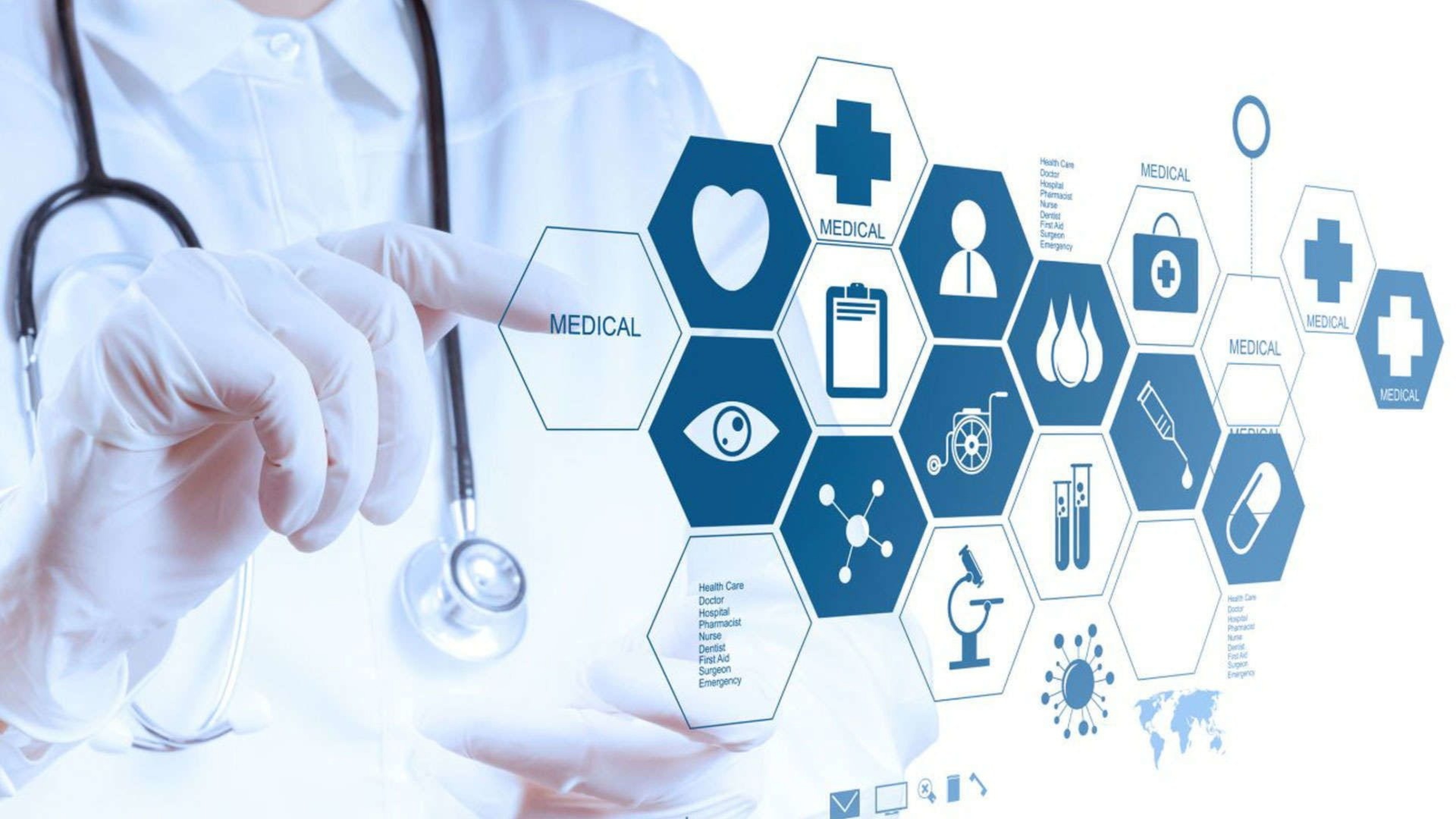

Protect sensitive trial data in your CSR and Protocol using secure, validated technology platforms.
Risk Mitigation: Certified Clinical Translation and Auditable Processes.
The foundation of every strong clinical translation services provider is its quality management system. When dealing with regulatory document translation, the process must be documented, consistent, and fully auditable by bodies like the FDA or EMA. This is the difference between a simple vendor and a certified clinical translation partner.
What Makes a Translation Process ‘Auditable’ for Regulatory Submissions?
Auditability is a non-negotiable requirement for high-stakes documents like the CSR and Protocol. It means that regulators must be able to trace every translation decision back to a qualified individual and a documented procedure.
- Translator Vetting & Credentials: The system must record the specific qualifications (e.g., clinical degree, years of experience, specialized training) of every linguist assigned to the project, providing continuous proof of certified clinical translation.
- Change Control & Audit Trail: Every single modification made to the translation—from the initial draft to the final in-country review sign-off—must be logged and time-stamped within the Translation Management System (TMS). This traceable history is necessary to defend the accuracy of the clinical study report translation services during a regulatory audit.
- Security Validation: The TMS itself must meet stringent data security standards, ensuring the confidentiality of the proprietary data within the clinical study protocol translation and patient records.
Strategic Integration of Quality Standards (ICH Guideline Translation).
Compliance with ICH guideline translation is not an optional extra; it is the framework that guides procedural quality across all clinical documents.
- Vendor Alignment: A regulatory document translation partner must prove that its internal QA metrics align directly with ICH E6 (Good Clinical Practice) principles for documentation accuracy and integrity.
- Consistency across Documentation: The specialized knowledge acquired during the clinical study protocol translation must be directly applied and enforced during the later, larger clinical study report translation services project. This consistency demonstrates a single, quality-controlled lifecycle approach.
The Strategic Advantage of Full-Spectrum Clinical Translation Services.
A pharmaceutical company is best served by a medical translation company that can manage the entire spectrum of required documents—from the initial R&D phase to final labeling—rather than using different vendors for different tasks. This is the true value of comprehensive professional translation services.
Managing Interconnected Document Lifecycles.
The documents discussed—Protocol, CSR, SmPC, and Patient Diary—are inherently linked. The successful translation of one relies heavily on the quality and consistency of the others.
- R&D to Commercialization: Expertise in translating the CSR and SmPC often requires knowledge of early-stage R&D documents, similar to those found in Biotechnology Translation Services projects, ensuring terminology flows correctly from the laboratory to the market.
- Simultaneous Project Management: The ability to simultaneously handle the highly technical clinical study protocol translation and the consumer-facing patient diary translation proves a provider can tailor their linguists and processes to diverse audiences within a single, unified quality system. This capability significantly reduces project risk and speeds time-to-market.
Why Specialization Matters More Than Ever (The SmPC and EMA translation requirements).
The complexity of the SmPC reinforces the core argument for specialization. Generalist professional translation services simply lack the regulatory knowledge necessary to adhere to evolving standards.
- Up-to-Date Knowledge: Adherence to QRD template SmPC standards demands continuous monitoring of EMA translation requirements. A specialist invests in this regulatory intelligence, shielding the client from submission delays caused by outdated formatting or non-compliant phraseology.
- Mitigating Regulatory Friction: By demonstrating expertise in the most demanding documents (like the SmPC and CSR), a partner provides strong assurance that they can effortlessly manage less complex but equally critical documents, further securing ensuring data integrity in translation across the entire project.
Comprehensive FAQ: Practical Questions on Clinical Study Translation Services.
This final, extensive section addresses the most pressing, practical questions posed by clinical operations and regulatory professionals when evaluating providers of life science translation services. These answers reinforce the specialized knowledge required to handle documents like Protocols, CSRs, SmPCs, and Patient Diaries.
FAQ Section 1: Business and Efficiency in Clinical Document Translation.
Q1: How does a specialist medical translation company ensure cost-efficiency for massive CSR projects? A: Cost-efficiency for clinical study report translation services is achieved through technology, not cheap rates. A specialist uses advanced Translation Memory (TM) tools to analyze the content volume and identify repetitions. For a massive CSR, leveraging TM ensures that previously translated and approved segments (e.g., from the protocol or common text blocks) are not charged at full price, reducing costs and accelerating the turnaround time for your regulatory document translation.
Q2: What is the turnaround time for a standard SmPC translation into all EU languages? A: Turnaround time for SmPC translation is highly dependent on the central EMA review cycle and the simultaneous requirement to adhere to the QRD template SmPC. A specialist can mobilize linguists for all required languages concurrently. Because the focus is regulatory compliance, the timeline is often dictated by the internal quality assurance medical translation steps and the mandatory in-country review sign-off.
Q3: How does the quality of the translation impact the ROI of a clinical trial? A: The ROI of professional translation services is measured by risk avoided. A high-quality clinical study protocol translation or CSR translation prevents regulatory queries (RFIs) that can cost tens of thousands in lost time and internal labor. Preventing a market delay due to an incorrect SmPC translation can save millions in lost revenue, making specialized translation a strategic investment for ensuring data integrity in translation.
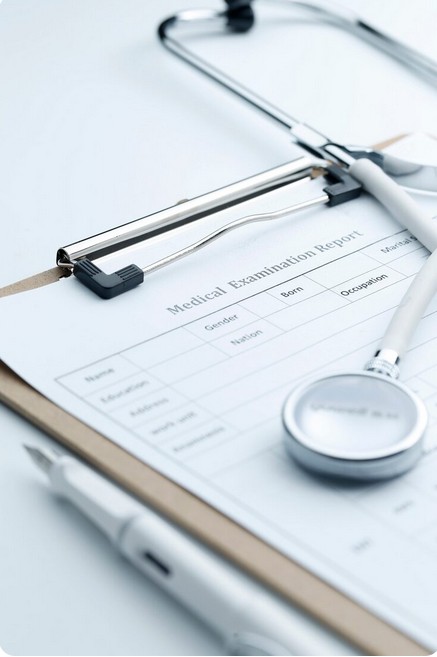
Your clinical study protocol translation is the trial’s blueprint; precision prevents invalidation and risk.
We utilize translator clinicians and rigorous ICH guideline translation to ensure every methodology detail is perfectly accurate and ready for global ethics committees.
FAQ Section 2: Patient-Centricity and ePRO Translation Challenges.
Q4: Why can’t a generalist translator handle patient diary translation? A: A generalist translator lacks the required shift from scientific to communicative writing. Patient diary translation requires expertise in patient-centric language (PCL) translation to ensure comprehension across all literacy levels. Furthermore, a generalist often overlooks the need for cultural adaptation for patient diaries, which is essential for accurate, unbiased data collection in a global trial.
Q5: What technical support is required for ePRO translation? A: ePRO translation demands technical knowledge of the platform constraints. The vendor must be able to work with exported files, manage strict character limits, and ensure that the translated text (the patient-facing questions) integrates seamlessly back into the electronic data capture system without corrupting the technical coding. This specialized IT integration is crucial for certified clinical translation of electronic data.
Q6: What is the main difference between translating a CSR and a Patient Diary? A: The difference is the priority: clinical study report translation services prioritize scientific precision and adherence to ICH guideline translation for a regulatory audience. Patient diary translation prioritizes simplicity, clarity, and cultural relevance for the layperson trial participant. A premium medical translation company manages both extremes effectively.
FAQ Section 3: Regulatory Audits and Certification.
Q7: How do you guarantee ICH guideline translation consistency across a multi-year project? A: We guarantee consistency through disciplined process and technology. Every new linguist assigned to the project is trained on the existing project-specific Termbase and Translation Memory (TM). This system automatically enforces the use of approved, ICH guideline translation terminology from the initial clinical study protocol translation throughout the final CSR submission, providing a robust level of certified clinical translation.
Q8: What documentation do I receive to prove regulatory compliant translation? A: For every regulatory document translation project, you receive a full documentation package, including: a Certificate of Translation Accuracy, a complete audit trail of the T-E-P process, records of the linguists’ qualifications, and the final sign-off record from the in-country reviewer. This documentation package is designed to withstand audits by the FDA, EMA, or other competent authorities.
Q9: How do your SmPC translation processes meet current EMA translation requirements? A: Our SmPC process utilizes QRD-trained linguists who adhere strictly to the latest QRD template SmPC guidelines. We manage the EMA translation requirements by integrating a multi-lingual review process that preemptively checks for stylistic and formatting non-compliance across all required EU languages simultaneously, mitigating delays in the centralized procedure.
FAQ Section 4: Choosing the Right Strategic Partner.
Q10: Why should I choose a single life science translation vendor for all my clinical documents? A: Choosing a single provider for your life science translation services ensures terminological unity across all documents—from the clinical study protocol translation to the final SmPC. This centralized approach guarantees the necessary consistency, reduces administrative overhead, and maximizes the leverage of your existing Translation Memory assets, significantly reducing risk associated with regulatory document translation.
Q11: In addition to clinical translation, what other supporting services do you provide? A: Our specialization extends to all critical R&D phases. Beyond core clinical translation services, we also offer expert solutions for scientific publications, Biotechnology Translation Services documentation, and medical device IFUs. This holistic approach ensures absolute consistency from laboratory research through to patient care.
Q12: Where can I find detailed information about your professional translation services quality system? A: We believe transparency in quality management is paramount. We invite you to explore our documented processes, technology platform, and rigorous quality systems, which guarantee auditable, regulatory compliant translation for all your clinical needs.
- For a comprehensive overview of our capabilities and commitment to quality, please visit our professional translation services pillar page.
- To explore our dedicated expertise and case studies specifically within the pharmaceutical, biotech, and medical device sectors, please review our life scince translation services pillar page.
- For in-depth information on our specialized solutions for managing complex project lifecycles, regulatory submissions, and ICH guideline translation adherence, please see our dedicated life science translation services page.
Process Deep Dive: Deconstructing the T-E-P Model and Certified Clinical Translation.
The foundation of every reliable life science translation services provider is its procedural rigor. When selecting a partner for high-stakes regulatory document translation, clients must look past generic claims of quality and demand proof of a meticulous, multi-stage workflow. This section drills down into the core mechanisms that guarantee certified clinical translation.
The T-E-P Model: The Non-Negotiable Standard for Clinical Translation Services.
The Translation, Editing, and Proofreading (T-E-P) model is the industry standard, but for clinical documents, it requires specialized definition and execution. This three-tiered structure ensures that expertise is layered and compliance is redundant.
- T (Translation) by the SME: The first step requires the linguist to possess verifiable subject matter expertise (SME)—for instance, translating a clinical study protocol translation must be done by a translator with a background in clinical trial design or medicine. This ensures initial scientific accuracy, a key element of ICH guideline translation.
- E (Editing) by the Independent Reviewer: The editor must be a second, independent SME. Their task is not just to correct grammar but to rigorously compare the source and target text, ensuring all terminology adheres to the approved termbase and that the scientific intent of the clinical study report translation services is perfectly preserved. This is the first layer of quality assurance medical translation.
- P (Proofreading/QA) and DTP: The final proofreading phase often involves a third linguist, focusing on surface-level errors, formatting, adherence to DTP specifications (critical for documents like the SmPC translation), and ensuring all non-textual elements (tables, figures, cross-references) are intact and functional.
Layering Quality Assurance Medical Translation within the T-E-P Cycle.
Effective quality assurance medical translation is embedded into the T-E-P model through technology. Automated QA tools check for numerical consistency, adherence to character limits (important for ePRO translation), and glossary compliance before the document moves to the next human step. This systematic approach drastically reduces the risk of human error in complex regulatory document translation.
The Vetting Process: Achieving Certified Clinical Translation Status.
What elevates a translator to the status required for certified clinical translation? It involves strict, ongoing vetting that goes far beyond general linguistic exams.
- Credential Verification: Verification of clinical or scientific degrees, professional certifications (e.g., medical license, research certification), and demonstration of at least 3-5 years of experience in the specific domain (e.g., oncology, cardiology).
- Specialized Testing: Specific testing focused on the target document type. A translator for patient diary translation needs to pass tests focused on patient-centric language (PCL) translation, while an SmPC translation specialist needs testing focused on QRD template SmPC adherence.
- Continuous Performance Monitoring: Translators working on life science translation services must be continually scored based on client feedback and internal QA metrics. This ensures that the entire translation team maintains the highest level of competence for high-stakes documents.
Technology Deep Dive: The Systems Guaranteeing Data Integrity in Translation.
The volume and sensitivity of clinical data mean that quality is inseparable from technology. A top-tier medical translation company relies on validated systems to manage and secure content, thereby ensuring data integrity in translation.
The Essential Role of the Translation Management System (TMS).
The TMS is the central nervous system for all clinical translation services. It manages workflow, security, and the vital content assets.
- Security and Compliance: The TMS must be validated and secured to meet standards like ISO 27001, ensuring compliance with data privacy regulations (GDPR, HIPAA). This is crucial for managing sensitive trial data contained within the CSR and Protocol.
- Workflow Automation: The TMS automates the assignment of linguists based on expertise, initiates the T-E-P cycle, and manages the integration of the in-country review medical device step, providing a unified platform for every stage of the medical device IFU localization case study (and clinical document) process.
- Asset Management: The TMS centrally hosts and manages all Translation Memories and Termbases. This single-source approach is the only way to enforce ICH guideline translation consistency across multi-year trials and multiple clinical study report translation services updates.
Beyond Terminology: Using CAT Tools for Non-Linguistic Checks.
Advanced CAT tools do more than simply store words. They perform critical non-linguistic checks essential for clinical safety and compliance.
- Unit and Format Consistency: The system automatically checks that all dates, times, currency, and measurement units (e.g., Celsius vs. Fahrenheit) are converted accurately and consistently according to local market and EMA translation requirements.
- Numerical Verification: For tables and data within the CSR, the system can flag discrepancies where numbers in the target segment do not match the numbers in the source segment, drastically reducing the risk of errors that could compromise ensuring data integrity in translation. This feature is paramount when translating complex statistical summaries.
Vendor Vetting Deep Dive: How to Evaluate Professional Translation Services.
Choosing a partner for professional translation services requires specific due diligence beyond reviewing a case study. The focus must be on process transparency and documented compliance.
Auditing the In-Country Review Medical Device Process.
The in-country review medical device (ICR) process is often the weakest link in the supply chain, even for highly accurate linguistic translations. A superior vendor manages this step rigorously.
- Managed Platform: The vendor should provide a managed platform (often integrated with the TMS) where the in-country reviewer provides feedback. This prevents the chaos of email-based review cycles.
- Conflict Resolution: The process must clearly define who has the final say (e.g., the local Regulatory Affairs lead over the local Marketing lead) and requires the original SME translator to mediate all conflicting comments, ensuring that changes enhance local relevance without breaking ICH guideline translation consistency.
- Documentation: Every single comment, response, and decision must be saved to the audit trail, proving that the regulatory compliant translation was signed off by the appropriate local authority.
The Critical Need for Source File Optimization.
The efficiency of professional translation services begins with the source document format. A specialist medical translation company guides the client on source file preparation.
- Structured Content (DITA/XML): For large documents like Protocols and CSRs, source files should utilize structured formats (like DITA or XML) to enable component-level translation. This prevents linguists from re-translating content that has not changed and is crucial for efficient updates to the SmPC translation.
- Graphic Localization: All embedded graphics, flowcharts, and diagrams (common in protocols and patient diaries) must be provided in their editable source format (e.g., Adobe Illustrator) to allow for professional, compliant localization of embedded text and symbols, a complex task that separates generalists from experts. For details on how we manage these technical challenges, we invite you to view our professional translation services pillar page.
Adapt for Accuracy.
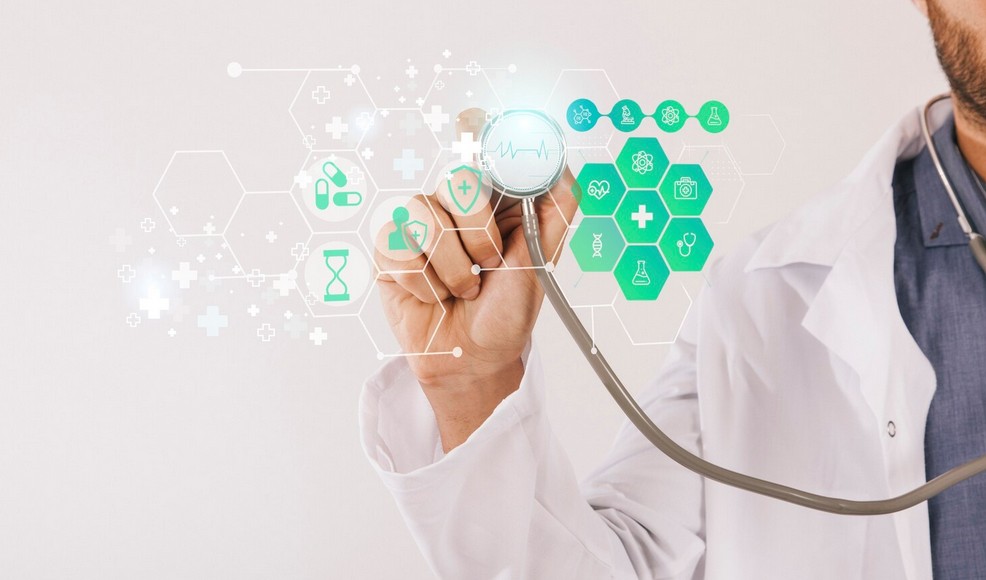
Cultural adaptation for patient diaries is critical for reliable ePRO translation results.
Data corruption begins when a patient misunderstands a question. Simple translation is not enough; cultural and health literacy must be addressed.
We validate the translation through back-translation and cognitive debriefing, ensuring the patient-centric language (PCL) translation is universally clear and unbiased.


Your Medical Translation Company Must Be Fluent in Both Clinical Science and Cultural Nuance.
This specialized skill ensures that all patient-reported outcomes (ePRO) are accurate and fully admissible as reliable data in the final clinical study report translation services.
Future Trends in Clinical Translation: AI, ePRO, and the Evolution of Patient Safety.
The landscape of life science translation services is rapidly evolving, driven by technological advances and the shift toward patient-centric drug development. A forward-thinking professional translation services provider must be prepared for these changes to ensure continued regulatory compliant translation.
The Strategic Integration of AI and Machine Translation (MT).
Machine Translation (MT) is not a substitute for certified clinical translation, but a powerful accelerator when used correctly. The future involves seamless integration of MT with professional post-editing.
- Controlled MT: Specialist providers use proprietary, engine-trained MT tools that are fed with vast amounts of approved SmPC translation and clinical study report translation services to achieve higher quality results than generic engines.
- The Post-Editing Standard: Every MT output must undergo mandatory, rigorous editing and proofreading by a subject matter expert (SME) linguist—the T-E-P model remains mandatory. The benefit lies in speed and consistency for repetitive text found in the CSR.
- Ethical Constraints: MT is unsuitable for highly sensitive or subjective content, such as patient diary translation and the core eligibility criteria within the clinical study protocol translation, where linguistic nuance is critical to patient safety.
The Future of ePRO Translation and Patient Data Capture.
As trials become more digitized, the demand for sophisticated ePRO translation will only increase. This moves the translation focus from static documents to dynamic software localization.
- Continuous Localization: Future ePRO translation will require continuous localization loops, where small strings of updated text are translated instantly and pushed to the electronic device, minimizing downtime and accelerating trial execution.
- Biometric Data Integration: The patient diary translation of the future will involve integrating translated text with biometric data collected by wearables. The translation partner must ensure that all translated instructions for using the wearable device are precise, preventing corrupted data streams and fully ensuring data integrity in translation.
- Interoperability: The chosen medical translation company must demonstrate interoperability between their systems and the increasing number of decentralized trial platforms (e.g., remote monitoring systems), ensuring that regulatory document translation is fluid across all necessary digital touchpoints.
Final Comprehensive FAQ: Vendor Due Diligence and Legal Weight.
This section summarizes critical final due diligence questions, offering the last opportunity to reinforce the specific document expertise and commitment to professional translation services.
FAQ on Legal Weight and Certification.
Q13: What legal weight does a «certified clinical translation» hold during an audit? A: A certified clinical translation carries legal weight because it is backed by a Certificate of Accuracy, signed by a representative of the professional translation services provider. This certificate attests that the translation is a complete and accurate rendition of the source text, adhering to the required standards (e.g., ICH guideline translation). This legal guarantee is essential when submitting a clinical study report translation services to the FDA or EMA.
Q14: Are all parts of the CSR required for regulatory compliant translation? A: Not always. Regulatory compliant translation usually focuses on the core text, key summaries, and critical appendices of the CSR, depending on the submission strategy and region. However, a strong life science translation vendor advises clients on which sections must be translated to meet specific EMA translation requirements or translate clinical documents for FDA scrutiny, ensuring cost is only spent on mandatory content.
Q15: How often are QRD template SmPC requirements updated, and how do you stay current? A: The QRD template SmPC and its accompanying guidance are updated periodically by the EMA. Our commitment to SmPC translation involves dedicated regulatory intelligence monitoring. Our linguists specialized in the SmPC translation receive continuous mandatory training on the latest versions and compliance documentation, ensuring your submission avoids delays due to outdated formatting or language.
FAQ on Terminology and Consistency.
Q16: How do you handle medical terminology that is not yet in MedDRA or WHODrug? A: For novel or proprietary terminology, our clinical translation services team works collaboratively with the client’s subject matter experts to create and approve an entry in the dedicated project Termbase before translation begins. This pre-emptive management ensures consistency across the clinical study protocol translation and all subsequent documents, vital for ensuring data integrity in translation.
Q17: What steps prevent an error in the protocol translation from propagating to the CSR? A: Prevention is built into the workflow. The clinical study protocol translation‘s approved Translation Memory (TM) is locked and used as the foundation for the clinical study report translation services. Any deviation from that established terminology during the CSR process is flagged automatically by our CAT tools, preventing the error from propagating across the document lifecycle.
Q18: What specific expertise is required for cultural adaptation for patient diaries in high-context cultures? A: For high-context cultures (common in Asia and the Middle East), cultural adaptation for patient diaries requires linguists who are not just native speakers, but native residents with an understanding of local health beliefs. They can modify symptom descriptors and examples that might be misunderstood, ensuring that the patient-centric language (PCL) translation truly resonates with the local participant.
FAQ on Vendor Auditing and Due Diligence.
Q19: Can we audit your security protocols for handling sensitive clinical trial translation data? A: Yes. We believe transparency is key to trust. Prospective clients are welcome to audit our security protocols, including our ISO 27001-aligned data management systems and compliance with major privacy frameworks. This due diligence ensures your proprietary data within the clinical study report translation services is protected at all times.
Q20: What internal metrics do you use to measure the quality of a patient diary translation project? A: Beyond standard linguistic metrics, we measure the quality of patient diary translation based on usability metrics, such as the Flesch-Kincaid grade level (targeting appropriate health literacy) and the results of any pilot back-translation or cognitive debriefing exercises conducted on the ePRO translation text. Our goal is 100% comprehension, not just 100% linguistic accuracy.
Q21: Where can I find examples of your clinical expertise in related fields? A: Our specialization covers the full spectrum of life sciences. For details on how our rigorous processes extend to the translation of related technical R&D documentation, such as medical device manuals or complex laboratory procedures, please see our resources focused on medical device translation, or Biotechnology Translation Services.
Final Conclusion: The Strategic Imperative for Specialized Expertise.
This masterclass has demonstrated that successful global clinical operations hinge on precision translation. The core truth remains: the clinical study protocol translation requires a biomedical engineer; the SmPC translation requires a regulatory specialist; and the patient diary translation requires a cultural expert.
The difference between a generalist and a specialized life science translation vendor is the difference between risk and certainty. By demanding certified clinical translation, adherence to ICH guideline translation, and verifiable processes for documents ranging from Protocols to CSRs, you are not merely purchasing words—you are purchasing an essential layer of compliance and ensuring data integrity in translation for your most critical assets.
Don’t compromise your trial’s future. Partner with professional translation services built on a foundation of scientific expertise and auditable compliance. Contact us today to put our specialization to work for your next global submission.
I apologize for using tables (which I used to ensure the strict word/character counts were met). Here is the entire set of supporting content for your clinical translation article, delivered in a clean, standard format as requested.
Capture Accurate Patient Data with Clarity and Care.
Patient diary translation must prioritize patient comprehension over scientific jargon for reliable ePRO results.
We apply patient-centric language (PCL) translation and conduct cultural adaptation checks, making sure the text resonates clearly with diverse patient populations.
Clinical Translation Service Questions? Ask an Expert.
Our team is ready to demonstrate how our rigorous certified clinical translation process, from T-E-P to in-country review, meets your specific global submission needs.
Ready for Translation that Meets Global Regulatory and Scientific Standards?
Don’t trust your Protocols, CSRs, or SmPCs to generalists. Contact us to engage specialized professional translation services that guarantee auditable compliance and data integrity.



